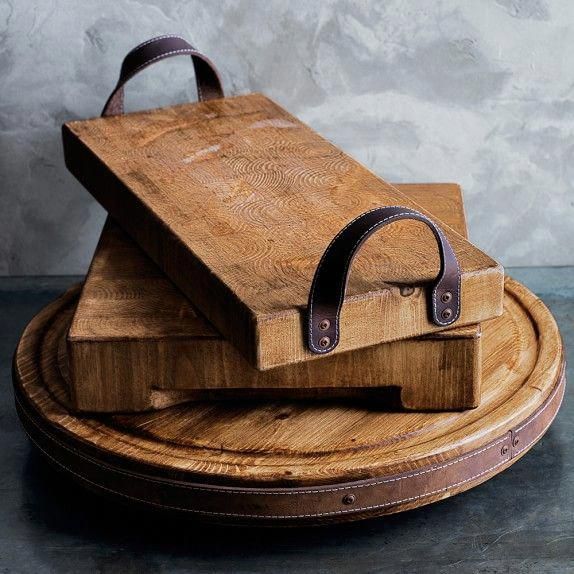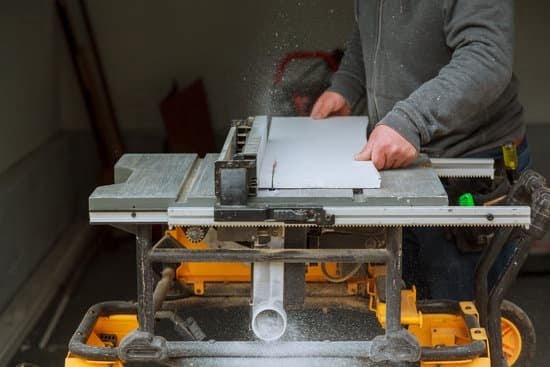Angle plays a crucial role in the performance and precision of single bevel Japanese woodworking knives. When it comes to woodworking, using the right angle can greatly impact the success of a project. In this article, we will delve into the world of single bevel Japanese woodworking knives and explore how angle affects their functionality.
Single bevel Japanese woodworking knives are known for their exceptional sharpness and precision. These knives are designed with a single cutting edge on one side, making them ideal for intricate woodworking tasks that require precise cuts. With such unique features, it is important to understand the significance of angle in maximizing the potential of these knives.
The angle at which a blade is sharpened determines its cutting ability and performance. It affects how smoothly the knife glides through wood, as well as its control and stability during cutting. By understanding the importance of angle in single bevel Japanese woodworking knives, craftsmen can effectively harness their versatility and precision to achieve outstanding results in their projects.
Exploring the Unique Features of Single Bevel Japanese Woodworking Knives
Single bevel Japanese woodworking knives are known for their unique features that set them apart from other types of knives. These knives, also known as chisel-edge or single-sided edge knives, have a flat back and a beveled front edge. This design allows these knives to excel in certain woodworking tasks, such as creating precise cuts and intricate designs.
Unmatched Sharpness
One of the defining features of single bevel Japanese woodworking knives is their unmatched sharpness. The beveled front edge allows for a more acute angle, which results in an incredibly sharp cutting edge. This sharpness is essential when working with delicate woods or when making intricate cuts that require precision.
Furthermore, the sharpening process for single bevel Japanese woodworking knives differs from other types of knives. These knives are typically sharpened on a whetstone to achieve the desired level of sharpness. The process involves carefully grinding the beveled side of the blade against the stone, ensuring a consistent and even edge.
Control and Versatility
Another characteristic that sets single bevel Japanese woodworking knives apart is their control and versatility. Due to their flat back design, these knives provide excellent control during use. Woodworkers can easily maneuver the knife through different wood grains and make precise cuts without worrying about slipping or losing control.
Additionally, single bevel Japanese woodworking knives offer versatility in terms of different tasks they can perform. The flat back can act as a guide when making straight cuts or creating clean lines, while the beveled front edge excels at creating progressive curves or shaping intricate details in wooden pieces.
Overall, exploring the unique features of single bevel Japanese woodworking knives reveals their unmatched sharpness and exceptional control and versatility. These characteristics make them an invaluable tool for any woodworker looking to achieve precision and create intricate designs in their work.
The Fundamentals of Knife Angle
The angle at which a woodworking knife is sharpened plays a crucial role in its performance and precision. In Japanese woodworking, the angle of the bevel on single bevel knives is especially important. The angle affects how the knife interacts with the wood, influencing factors such as cutting efficiency, edge durability, and overall control.
When it comes to single bevel Japanese woodworking knives, there are generally two main angle approaches: acute and obtuse. An acute angle refers to a narrow bevel, typically around 20 degrees or less. This results in a sharper edge that excels at intricate tasks such as detailed carving and delicate joinery work.
On the other hand, an obtuse angle refers to a wider bevel, typically around 30 degrees or more. This provides greater durability and stability for heavy-duty tasks like chopping or shaping large sections of wood.
Both acute and obtuse angles have their advantages and disadvantages. An acute angle allows for finer cuts and greater precision, but it also requires more frequent sharpening due to the thinner blade. On the other hand, an obtuse angle sacrifices some precision but offers better edge retention and durability.
| Angle Approach | Advantages | Disadvantages |
|---|---|---|
| Acute Angle | – Greater precision in intricate tasks
| – Requires more frequent sharpening
|
| Obtuse Angle | – Better edge retention
| – Sacrifices some precision compared to acute angles
|
It’s important to note that the ideal angle will vary depending on the specific woodworking task at hand. For example, a woodworker may prefer a slightly more acute angle for carving fine details, while opting for a wider bevel when cutting through tough hardwoods. Finding the perfect angle often requires practice and experimentation, as well as taking into consideration personal preferences and the characteristics of the wood being worked on.
The Art of Sharpening Single Bevel Japanese Woodworking Knives
Sharpening a single bevel Japanese woodworking knife is an art that requires precision and the right techniques and tools. The process of sharpening these knives not only restores their cutting power but also helps maintain their longevity. In this section, we will explore the various techniques and tools used in the art of sharpening single bevel Japanese woodworking knives.
- Choosing the Right Sharpening Stone: One of the most important aspects of sharpening a single bevel Japanese woodworking knife is selecting the right sharpening stone. Traditional Japanese water stones are commonly used for this purpose.
These stones come in different grit levels, ranging from coarse to fine. Coarser grit stones, such as 400-800, are used for repairing chips or reshaping the blade, while finer grit stones, like 1000-6000, are ideal for honing and polishing the blade. - Honing Techniques: Once you have selected the appropriate sharpening stone, it’s time to hone your single bevel Japanese woodworking knife. Start by wetting your sharpening stone with water or oil (depending on the type of stone).
Hold the knife at a consistent angle against the stone, typically around 15-20 degrees for most woodworking tasks. Use smooth and steady strokes to move the blade across the stone, maintaining constant pressure on both sides of the blade. - Stropping for Finishing: After honing your single bevel Japanese woodworking knife on a sharpening stone, you can further refine its edge by stropping it on a leather strop or a fine abrasive compound loaded strop. Stropping helps remove any burrs or tiny imperfections left after sharpening and gives your blade a polished finish. Simply hold the knife at a slightly higher angle than during honing and gently glide it along the strop surface.
Mastering the Technique
When it comes to single bevel Japanese woodworking knives, finding the ideal angle is crucial for achieving optimal results in different woodworking tasks. The angle at which the blade meets the wood determines the performance and precision of the knife. In this section, we will explore how to master the technique of finding the ideal angle for various woodworking tasks.
1. Understanding Task-Specific Angles:
Different woodworking tasks require different angles to achieve desired results. For delicate and detailed work such as carving intricate designs or creating joints, a lower angle between 15-20 degrees is recommended. This allows for greater control and precision, ensuring clean and accurate cuts.
2. Factors Influencing Angle Selection:
Several factors influence the choice of angle for different woodworking tasks. The type of wood being worked on, hardness of the wood, and desired outcome all play a role in determining the ideal angle. Softer woods may require a steeper angle to prevent excessive tearing or chipping, while harder woods may benefit from a shallower angle to reduce resistance when cutting.
3. Experimentation and Practice:
Finding the perfect angle for each woodworking task requires experimentation and practice. It is recommended to start with a conservative angle and gradually adjust as needed based on your preferences and experience. By experimenting with different angles, you can discover what works best for you and your specific projects.
Remember to always test your chosen angle on scrap wood before working on your actual project to ensure that it produces the desired results.
By mastering the technique of finding the ideal angle for different woodworking tasks, you can achieve precise and professional-looking results with your single bevel Japanese woodworking knife. Experimentation, practice, and understanding task-specific angles are key steps toward fine-tuning your technique and enhancing your overall woodworking experience.
The Advantages and Disadvantages of Different Angle Approaches for Single Bevel Japanese Woodworking Knives
Single bevel Japanese woodworking knives are highly regarded for their precision and versatility. One of the key factors that contribute to their exceptional performance is the angle at which they are sharpened. The angle of a single bevel Japanese woodworking knife plays a crucial role in its cutting ability, control, and overall effectiveness.
Different angle approaches can offer distinct advantages and disadvantages when it comes to single bevel Japanese woodworking knives. One common angle approach is a steep angle, which typically ranges from 25 to 30 degrees. This steep angle creates a thinner edge, allowing for excellent slicing ability and clean cuts. However, it may sacrifice some durability and strength, making it more prone to chipping or dullness.
On the other hand, a wider or shallower angle, ranging from 15 to 20 degrees, offers increased durability and resilience. This angle approach provides better edge retention and can withstand tougher wood grains without sacrificing too much sharpness. However, the trade-off is that it may have slightly reduced slicing ability compared to a steeper angle.
It’s important to note that the optimal angle for single bevel Japanese woodworking knives ultimately depends on personal preference and the specific tasks at hand. Woodworkers who prioritize clean cuts and precision may choose a steeper angle, while those who frequently work with denser or more abrasive materials might opt for a wider or shallower angle for enhanced durability.
Ultimately, finding the ideal angle for your single bevel Japanese woodworking knife requires experimentation and fine-tuning based on your unique needs as a woodworker. Whether you choose a steeper or wider angle approach, regular maintenance and sharpening will play an essential role in keeping your knife performing at its best.
Tips and Tricks from the Experts
Understanding the Importance of Knife Angle in Single Bevel Japanese Woodworking Knives
Before delving into the tips and tricks for fine-tuning your knife angle, it is crucial to understand the importance of angle in single bevel Japanese woodworking knives. The angle at which you sharpen your knife plays a significant role in determining its performance and precision.
The primary function of the knife angle is to control the cutting action. A steeper angle creates a more acute edge, which is ideal for precise cutting and slicing tasks. On the other hand, a shallower angle provides more durability but sacrifices some degree of sharpness.
Different woodworking tasks require different angles. For delicate detail work or precise cuts, a narrower angle between 15 to 20 degrees is recommended. This narrower angle allows for intricate carving without damaging the wood’s grain.
Experiment with Different Angles: Finding What Works Best for You
Every woodworker has their own preferences when it comes to knife angles. While there are recommended ranges, it ultimately comes down to personal preference and the specific task at hand. One way to find what works best for you is through experimentation.
When starting out with single bevel Japanese woodworking knives, it’s a good idea to begin with a medium-angle range between 25 to 30 degrees. This provides a balance between sharpness and durability. As you gain experience and confidence in your technique, feel free to adjust the angle based on your needs.
Remember that different woods may require slightly different angles due to variations in hardness and grain structure. It’s essential to practice on scrap pieces before working on your final project to ensure you have found the optimal knife angle for that specific wood.
Pay Attention to Bevel Surface Area
While finding the right angle is crucial, another aspect that goes hand-in-hand with it is paying attention to the bevel surface area. The size and shape of the bevel surface can impact the woodworking experience.
A wider bevel will help reduce friction when cutting, making it easier to glide through the wood. This is particularly beneficial for longer cuts or when working with harder woods. However, a wider bevel may sacrifice some degree of precision.
Conversely, a narrower bevel provides increased precision but may require more skill and control to achieve clean cuts. It is recommended for intricate carving or when working with softer woods.
Finding a balance between the angle and the size of the bevel surface area will ultimately depend on your personal preferences and the specific woodworking task at hand. Experimentation and practice will help you discover what combination yields optimal results for your needs.
Maintaining the Perfect Angle
Keeping your single bevel Japanese woodworking knives sharp and effective is crucial for achieving precise and clean cuts. Proper maintenance of the knife angle plays a significant role in maintaining its sharpness and effectiveness. Here are some tips on how to maintain the perfect angle for your single bevel Japanese woodworking knives.
Firstly, it is essential to invest in high-quality sharpening stones specifically designed for single bevel knives. These stones come in different grits, which determine their coarseness or fineness. To maintain the proper angle, start with a coarse grit stone to remove any nicks or dullness from the blade’s edge. As you progress through finer grit stones, ensure that you maintain a consistent angle by using a sharpening guide or holding the knife at a stable angle.
Another important technique to consider is alternating your sharpening strokes to achieve an even edge along the entire length of the blade. Start by placing the blade flat against the stone at the desired angle, then move it up and down while maintaining that angle. This motion ensures that both sides of the single bevel blade are evenly sharpened.
Regular honing is also necessary to keep your single bevel Japanese woodworking knife performing at its best. Use a honing rod or leather strop to realign any microscopic burrs along the blade’s edge between sharpenings. Hold the knife at a consistent angle and make several passes on each side of the blade until it feels smooth and sharp.
In addition to these techniques, proper storage and handling of your single bevel Japanese woodworking knives can significantly impact their performance. Always store them in protective sheaths or knife blocks when not in use, and avoid exposing them to excessive moisture or extreme temperatures that could cause damage.
By following these maintenance tips, you can ensure that your single bevel Japanese woodworking knives remain sharp and effective for a long time. Regular sharpening, honing, and proper storage will not only extend the life of your knives but also enhance your woodworking experience by providing precise and clean cuts every time.
Conclusion
In conclusion, single bevel Japanese woodworking knives offer a unique combination of versatility and precision that make them indispensable tools for woodworkers. The angle at which these knives are sharpened plays a crucial role in their performance and can greatly enhance their effectiveness in various woodworking tasks. By understanding the fundamentals of knife angle and practicing the art of sharpening, woodworkers can master the technique of finding the ideal angle for different types of cuts.
One of the key advantages of single bevel Japanese woodworking knives is their ability to produce incredibly precise and clean cuts. The sharpness and thinness of the blade, combined with the proper angle, allow woodworkers to achieve intricate details and smooth finishes on their projects. Additionally, the edge retention of these knives is exceptional when maintained properly, ensuring longevity and efficiency in cutting.
However, it is important to note that finding the right angle approach for single bevel Japanese woodworking knives may require some experimentation and personal preference. Some woodworkers may prefer a lower or higher angle based on their specific needs and working style. It is advisable to seek advice from experts in order to fine-tune one’s knife angle for optimal results.
Lastly, maintaining the perfect angle is essential for keeping single bevel Japanese woodworking knives sharp and effective. Regular sharpening using appropriate techniques and tools will ensure that these knives continue to deliver superior performance. With proper care, woodworkers can continue to embrace the versatility and precision offered by single bevel Japanese woodworking knives for years to come.
Frequently Asked Questions
What is the sharpening angle for a single bevel Japanese knife?
The sharpening angle for a single bevel Japanese knife can vary depending on the specific knife and its intended use. Generally, single bevel Japanese knives have a sharpening angle that ranges between 15 and 18 degrees.
This narrow angle allows for incredibly precise cutting and slicing. The actual angle may be adjusted slightly based on factors such as the type of food being prepared or the chef’s personal preference.
Are Japanese knives 15 or 20 degrees?
Japanese knives typically have a sharpening angle of around 15 degrees. This is significantly sharper than the standard 20-degree edge commonly found in Western-style knives.
The narrower angle of Japanese knives enables them to slice through ingredients with exceptional precision and control. However, it’s important to note that not all Japanese knives have the same sharpening angle, as different types of blades and purposes might require slight variations.
How do you use a single bevel Japanese knife?
When using a single bevel Japanese knife, it is essential to understand its unique characteristics and handle it properly. First, always hold the knife firmly but lightly using a pinch grip technique, where your thumb rests on one side of the blade base while your index finger grips the opposite side.
This grip provides optimal control over the precise cutting motion.

Hi everyone! I’m a woodworker and blogger, and this is my woodworking blog. In my blog, I share tips and tricks for woodworkers of all skill levels, as well as project ideas that you can try yourself.





